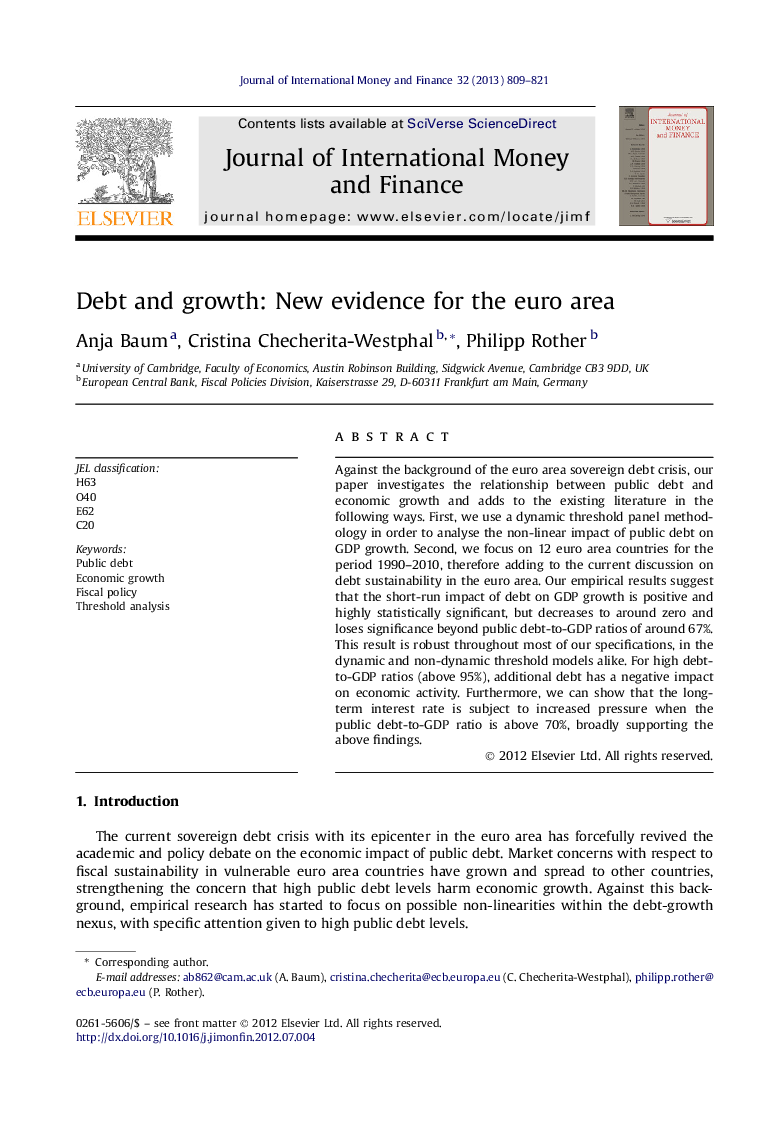| Article ID | Journal | Published Year | Pages | File Type |
|---|---|---|---|---|
| 7366392 | Journal of International Money and Finance | 2013 | 13 Pages |
Abstract
Against the background of the euro area sovereign debt crisis, our paper investigates the relationship between public debt and economic growth and adds to the existing literature in the following ways. First, we use a dynamic threshold panel methodology in order to analyse the non-linear impact of public debt on GDP growth. Second, we focus on 12 euro area countries for the period 1990-2010, therefore adding to the current discussion on debt sustainability in the euro area. Our empirical results suggest that the short-run impact of debt on GDP growth is positive and highly statistically significant, but decreases to around zero and loses significance beyond public debt-to-GDP ratios of around 67%. This result is robust throughout most of our specifications, in the dynamic and non-dynamic threshold models alike. For high debt-to-GDP ratios (above 95%), additional debt has a negative impact on economic activity. Furthermore, we can show that the long-term interest rate is subject to increased pressure when the public debt-to-GDP ratio is above 70%, broadly supporting the above findings.
Related Topics
Social Sciences and Humanities
Economics, Econometrics and Finance
Economics and Econometrics
Authors
Anja Baum, Cristina Checherita-Westphal, Philipp Rother,
